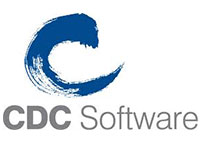
Five years ago, megadeals were all the rage in the business process outsourcing (BPO) world. Global players such as IBM, Accenture, ACS and CSC were racking up billion-dollar multiyear contracts, mainly for accounting, human resource and procurement functions. Now that’s changing.
“What we can say in BPO is that we have seen a slowdown in deal signings,” Ed Thomas, an outsourcing analyst at Datamonitor, told CRM Buyer.
In 2008, there were 155 BPO deals totaling US$1 million and above, Datamonitor reported. So far in 2009, there have been 58.
“That means we’re on course for a significantly lower total for 2009,” said Thomas.
While $1 billion-plus deals were common three to four years ago, there has not been a single one of that magnitude signed in 2009. The biggest on Datamonitor’s books is a $500 million-plus deal signed by Capital Group.
“So the deals being announced are getting smaller and fewer. This isn’t just a trend that’s specific to BPO — it’s the entire outsourcing picture,” Thomas noted.
“Today it’s big news when service providers land a $100 million dollar contract,” Dana Stiffler, research director of global business and outsourcing services for AMR Research, told CRM Buyer. “It used to $1 billion was big news. Now it’s more tactical deals.”
“We are all aware that a lot of BPO — predominantly in the U.S. and Europe — has been facing tremendous revenue-related issues,” Mukesh Dialani, senior analyst in IDC’s worldwide BPO service, told CRM Buyer.
With North American and European BPO markets slowing down however, there has been an increased focus globally on offshore BPO vendors selling into emerging economies, Dialani added. “All of a sudden, vendors like Genpact and WNS are finding markets in Australia, India, New Zealand and Singapore. We see a lot more deals coming from regions that didn’t get noticed before.”
Market Ch-ch-ch-changes
There are a number of possible explanations for why the market has slowed.
“It could that companies are more reluctant to announce BPO deals because of the economic climate,” Thomas said. “Also, offshoring is coming under more scrutiny as the domestic economy suffers.”
Lower-dollar deals could also mean that companies are getting savvier about their BPO options.
“Those 2003/4 contracts are coming to an end, and companies are looking to renew,” Thomas said, “but now they’re more aware of their options and perhaps are splitting deals into smaller parts so they can have more control.
“There are more multisource consortium deals with best-of-breeders,” he noted.
“People have started realizing the disadvantages of being tied to one large vendor, because they weren’t necessarily assured of getting resources when and where they needed them,” Stiffler said. “You don’t have a lot of leverage [with one vendor], so there has been more aggressive activity in multivendor deals. As long as they get their governance right and can manage all the pieces, businesses are finding they can get a higher quality of service.”
There is also a decided increase in business outcome contracts, Dialani added. “Vendors are striking agreements to deliver business outcomes — such as cost reduction promises.”
Which Way Are We Going?
Although the BPO landscape continues to be dominated by end-to-end players like IBM and Accenture, there is a decided growth in smaller companies that focus on key business process areas.
“Businesses have realized that there is specific knowledge outside of their organization that would take them five times as long to recruit and acquire in house,” David M. Auld, president of ChannelAssist, a provider of partner relationship management BPO services, told CRM Buyer. “Large organizations still deal with large vendors — but also smaller specialists like us.”
When it comes to which business process is being outsourced, finance and accounting continues to remain a strong and growing category. HR, however, is a market that is stagnant.
“We have seen very few HR outsourcing deals being announced at the moment,” Thomas said.
Finance and accounting BPO outsourcing “has already resumed its pre-recession surge, with 13 percent of companies looking to make their first venture in an F&A BPO model,” states a July 2009 AMR report, “State of the Outsourcing Industry in Mid-2009.”
“Thirty percent of existing buyers are increasing scope and only 17 percent are decreasing,” the report continues.
Human resources outsourcing is expected to be relatively flat; procurement BPO is slowing down, following an aggressive growth phase in recent years.
Up-and-coming areas of BPO that are attracting industry attention include supply chain functions.
“The supply chain operations arena has pretty significant skills shortages and technology gaps — that will be the next big thing for BPO,” Stiffler said.
There has also been a noticeable increase in multishoring.
“Rather than putting it all offshore in India, now you might have resources in India, Mexico, China and the U.S. so you can be closer to customers and use the available language skills. It’s not a case of less offshoring, but of more locations coming into play.”
Off-the-shelf platform-based BPO is also showing promise, especially as an alternative for small to medium-sized businesses that want to tap into specific “generic” processes.
“Platform BPO is the practice of creating platforms or standardized solutions,” Dialani explained. “Certain industries are asking customers to migrate to their platform, which may or may not be shared by other customers, to segue into other opportunities.”
Knowledge Is Power
One of the most promising of BPO offshoots is knowledge process outsourcing (KPO), which includes complex strategic functions such as industry-specific research and analytics, equity credit and investment research, R&D services for engineering, pharmaceutical and biotechnology firms, and legal processes. Even animation is part of that list as major corporations such as Disney have been striking deals with third-party outsourcers in the Philippines for example, Thomas said.
Analytics as a Service is an offshoot of the KPO picture.
“We’re now getting into the domain of mapping metrics, gathering data, creating indexes and helping businesses figure out their performance levels,” Dialani explained. “Right now, it’s a market for niche players in specific verticals.”
Another KPO area that’s very profitable is clinical trials management and offshore R&D life sciences.
“That’s becoming a big industry,” Stiffler said, “and a lot of companies are pitching supply chain planning and analytics. However, the success of these analytics services will depend on their ability to put a common technology platform in the middle of it.”
Proceeding With Caution
While analysts have been scaling back on their projections for 2009, the AMR study noted that outsourcing will come back with double-digit growth over the next few months.
“We are anticipating some modest contract growth in 3Q09, with a notable spike in new contracts and existing contract augmentation in 4Q09 and 1Q10,” it projects. However, engagements will be smaller in scope and more cautious.
“At the end of 2008 and the first quarter of this year, people were paralyzed about making decisions,” Stiffler observed, “but we are detecting some movement, and people are getting back on their horses and pulling the triggers. It just won’t be the massive outsourcing or monster megadeals we have seen in the past.”






















































